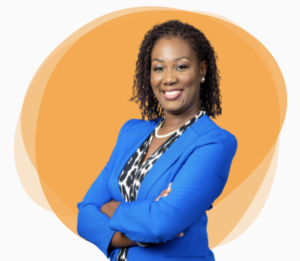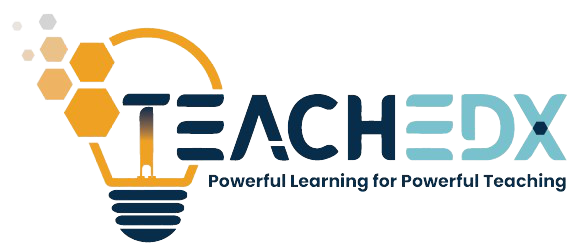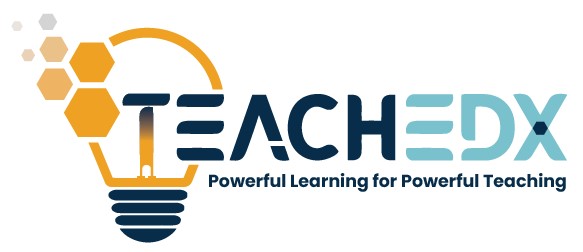Implementing Problem-Based Learning (PBL) Part I
- Venessa Powell
- January 22, 2024
- No Comments
Implementing problem-based learning may seem daunting for many of us who have only ever experienced a traditional learning environment. We have been steeped in a tradition where evidence of teacher control (good classroom management skills) is every student in their seat busy working quietly. However, the dynamic nature of education demands that we continually adapt to better meet the needs of our students. Problem-Based Learning (PBL) represents a shift to a more student-centred approach, encouraging students to take charge of their learning by engaging with real-world problems. For the novice PBL facilitator, transitioning from a traditional teaching model requires not just a change in technique, but a change in mindset. This post aims to guide traditional teachers through the planning and implementation of PBL in their classrooms, ensuring a smooth transition to this enriching educational practice.
Step 1: Rethink Your Role
The first step in implementing project-based learning (PBL) is to reconceptualize your role as an educator. In a traditional setting, teachers are the primary source of information, delivering content directly to students. PBL, however, positions you as a facilitator who guides students through the learning process. Your role is to create an environment where students can explore, ask questions, and learn from each other. Embrace this shift by:
- Encourage student autonomy and decision-making. This may seem difficult to do in contexts where examination results dictate how we are perceived as educators. We can, however, integrate other ways of knowledge transmission by giving students some voice in how they experience the discipline. In the age of content creators, leverage their interests in content creation by allowing them to do the research and present the content you would usually teach in a way that excites them and their peers.
- Ask open-ended questions to stimulate critical thinking. This step takes some planning. Make a list of the essential questions that you want students to be able to answer PRIOR to teaching your lesson. Ensure that students really have to engage with the content to answer (yes/no/one-word responses are not allowed). Planning your questions ahead of time lightens your cognitive load while trying to balance the other elements of implementing your lesson.
- Provide resources and support, rather than direct answers. This approach can seem harder than just giving students the answer. Allowing students to search for their answers is time-consuming, especially when students do not know how to carry out research. While this may be true, as they develop the research skills, it will take them less time to find what they are looking for. The deliberate inquiry process yields more long-term retention than just being told what to do/remember.
Step 2: Understand the PBL Process
Before diving into PBL, it’s crucial to understand its components. PBL involves presenting students with a complex, real-world problem that lacks a clear, definitive solution. The process typically follows these steps:
- Present the problem: Introduce an open-ended problem that relates to your curriculum. You can pull ideas from government websites and current events.
- Identify what’s known and what’s needed: Students discuss what they already know and what information they need to find.
- Research and investigation: Students work individually or in groups to research the problem.
- Developing and presenting solutions: Students propose solutions based on their research and present them to the class.
- Reflecting and evaluating: The class discusses the proposed solutions, reflecting on their effectiveness and the learning process.
Step 3: Plan Your PBL Curriculum
Transitioning to PBL doesn’t mean abandoning your curriculum; it means framing it around problems that require the content knowledge you need to teach. When planning your curriculum:
- Select relevant, challenging problems that align with your learning objectives. Ideas for problems can be found in both the private and public sectors. Get to know your students’ interests as these may also provide interesting contexts.
- Consider the resources available to your students and any constraints they might face. Consider alternatives where real objects or experiences are difficult to access. Virtual tours and augmented reality experiences can replace field trips if the budget is limited. Have students make replicas in instances where actual artefacts are unavailable to children. Simulate experiences through classroom role play.
- Develop assessment criteria that measure both the process and the content knowledge. Implementing project-based learning results in the ultimate 21st-century classroom. It is not enough for students to learn content. There are skills within each discipline that are considered essential in contemporary classrooms. These include designing experiments, finding and making use of patterns, drawing inferences, etc. Include these skills in your rubric.
Step 4: Prepare Your Students
Students accustomed to traditional learning may need support as they adjust to PBL. Prepare your students by:
- Explaining the benefits of PBL and how it differs from traditional learning.
- Establishing clear expectations for participation, collaboration, and assessment.
- Teaching and reinforcing skills necessary for PBL, such as research methods, critical thinking, and teamwork.
Step 5: Implementing Project-Based Learning in Your Classroom
With preparation complete, it’s time to implement PBL in your classroom. Keep the following tips in mind:
- Start with a manageable, well-defined problem to build confidence in the process.
- Monitor and support student groups, providing guidance without leading them to solutions.
- Encourage students to reflect on their learning and the PBL process regularly.
Step 6: Reflect and Adapt
After completing a PBL cycle, take time to reflect on the experience:
- Gather feedback from students on what they found helpful, challenging, and engaging.
- Reflect on your facilitation: What worked well, and what could be improved?
- Assess the effectiveness of the problem in meeting your learning objectives.
- Review the solutions and learning outcomes: Were students able to apply their knowledge and skills effectively?
- Consider the group dynamics and collaboration: How did students work together, and how might this be enhanced?
Reflection is a critical component of PBL because it provides insights that can be used to refine your approach. Reflection should be an ongoing dialogue between you and your students to improve the learning experience continually.
As you gather insights, adapt your future PBL plans accordingly:
- Adjust the complexity of problems based on student feedback and outcomes.
- Fine-tune your role as a facilitator to better support student learning.
- Update resources and materials to ensure they are effective and engaging.
- Adapt assessment methods to ensure they capture both the process and the product of learning.
Remember that the shift to PBL is a journey, not a destination. It’s an iterative process that evolves with each iteration. As you become more comfortable with PBL, you can gradually tackle more complex problems and incorporate a wider range of skills and content areas.
Conclusion
Shifting from a traditional teaching model to implementing a problem-based learning approach requires patience, flexibility, and a willingness to learn alongside your students. By redefining your role, understanding the PBL process, planning carefully, preparing your students, implementing with intention, and reflecting on your practice, you can transform your teaching and create a more dynamic, engaging, and student-centered classroom. Embrace the change, and watch as your students become active, autonomous learners equipped to tackle the problems of the real world.
Other articles you may find useful:
Like this article?

Venessa Powell
I never wanted to become a teacher. As a matter of fact, anybody who knew me knew that I was set on becoming a graphic designer. Some would say it was by divine intervention others may call it the universe redirecting me, but circumstances led me to teachers’ college at the end of high school where I pursued secondary mathematics education.


